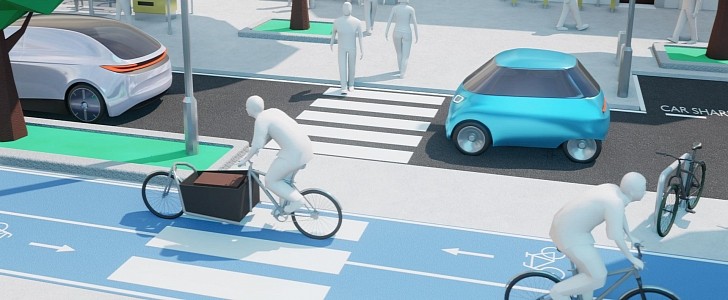Could small electric three- and four-wheeled cars, together with all types of electric two-wheelers, completely replace conventional cars in the not-so-distant future? It may be just a possibility, but one that’s highly encouraged by a recent study conducted by the German Aerospace Center (DLR).
Light Electric Vehicles (LEVs) could be used to drive half of the kilometers that are currently covered by conventional cars in Germany, which would lead to a 40% cut in greenhouse gas emissions. This was the main finding of a recent study that researchers from the DLR Institutes of Vehicle Concepts and Transport Research conducted on behalf of LEVA-EU (an association that promotes LEVs for sustainable mobility).
Germany’s statistics regarding traffic and the use of ICE cars are probably very similar to other countries as well – cars are still the most commonly used means of transport, even though they carry two people at best, on medium distances (80% of the car journeys in this country cover less than 20 km, which is approximately 12 miles).
At the same time, passenger cars are responsible for more than 60% of the greenhouse gas emissions. The conclusion seems obvious – the number of current regular cars on the road isn’t justified, and they also cause a great deal of environmental damage, so they should be replaced by something else.
On the other hand, public transportation and shared mobility cannot be the universal answer. Individual mobility will still be at the forefront of transportation, especially in areas where alternatives aren’t available, or during certain times. According to the DLR study, e-scooters, e-bikes, and small L7e class cars could be the answer.
LEVs help not only cut CO2 emission levels because of their electric propulsion systems, but they also require less energy simply because they are smaller and lighter. This means that they can function with smaller batteries, and require fewer raw materials for production. All in all, they are climate-friendly and sustainable throughout their lifecycle. And LEVs deliver these benefits without sacrificing individual mobility.
Still, there is a long way to go before these small EVs can be seen in large numbers on public roads. At the moment, they represented a very limited niche on the market, and according to DLR, they’re not high on the political agenda either. Future research should also focus on making LEVs more appealing to the public.
At the same time, DLR is betting on self-driving technology, and it’s working on three concept cars, one of which is an autonomous hydrogen-electric five-seater, called the IUV (Interurban Vehicle).
Germany’s statistics regarding traffic and the use of ICE cars are probably very similar to other countries as well – cars are still the most commonly used means of transport, even though they carry two people at best, on medium distances (80% of the car journeys in this country cover less than 20 km, which is approximately 12 miles).
At the same time, passenger cars are responsible for more than 60% of the greenhouse gas emissions. The conclusion seems obvious – the number of current regular cars on the road isn’t justified, and they also cause a great deal of environmental damage, so they should be replaced by something else.
On the other hand, public transportation and shared mobility cannot be the universal answer. Individual mobility will still be at the forefront of transportation, especially in areas where alternatives aren’t available, or during certain times. According to the DLR study, e-scooters, e-bikes, and small L7e class cars could be the answer.
LEVs help not only cut CO2 emission levels because of their electric propulsion systems, but they also require less energy simply because they are smaller and lighter. This means that they can function with smaller batteries, and require fewer raw materials for production. All in all, they are climate-friendly and sustainable throughout their lifecycle. And LEVs deliver these benefits without sacrificing individual mobility.
Still, there is a long way to go before these small EVs can be seen in large numbers on public roads. At the moment, they represented a very limited niche on the market, and according to DLR, they’re not high on the political agenda either. Future research should also focus on making LEVs more appealing to the public.
At the same time, DLR is betting on self-driving technology, and it’s working on three concept cars, one of which is an autonomous hydrogen-electric five-seater, called the IUV (Interurban Vehicle).






